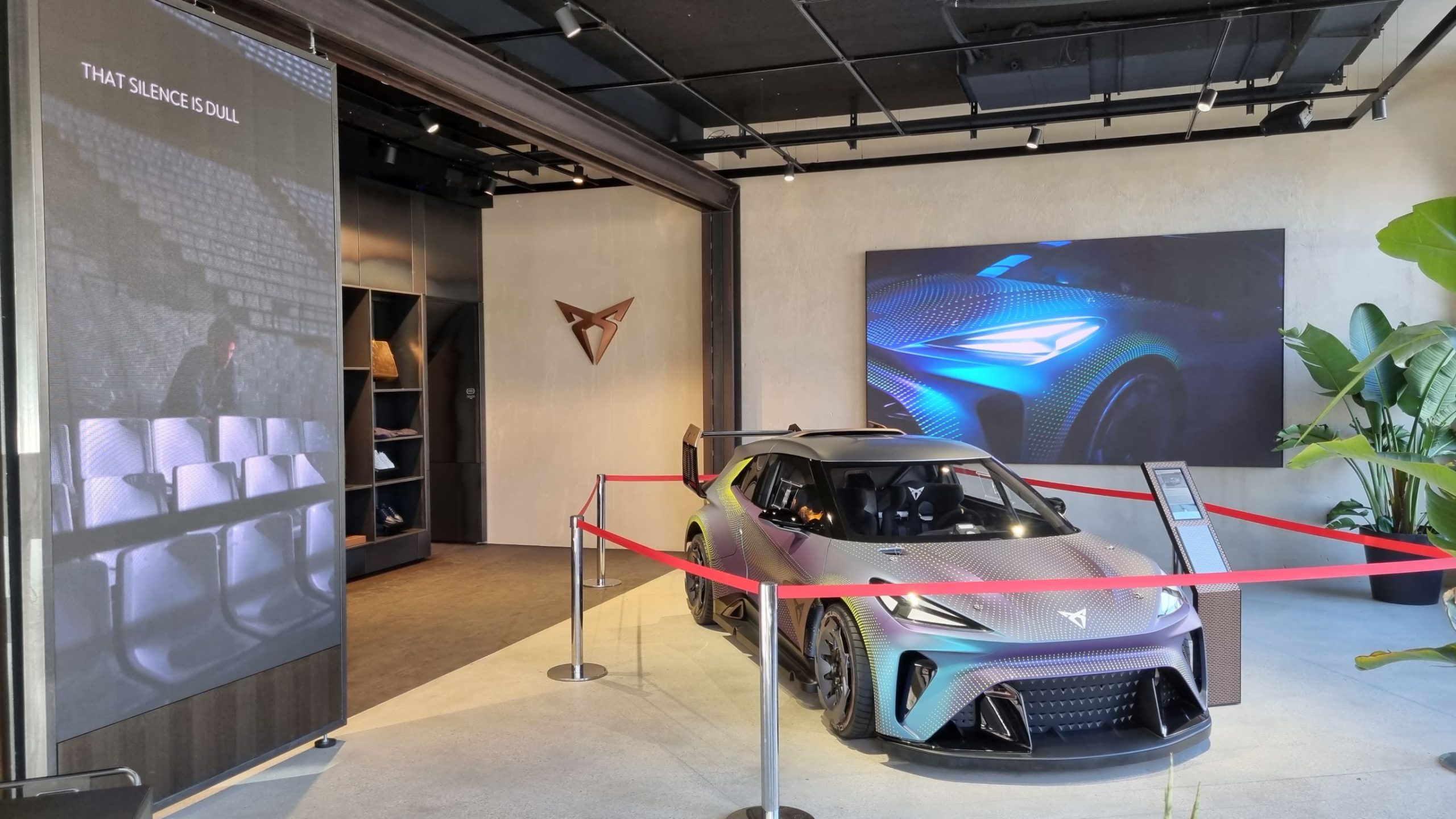
Car Brand Seat CUPRA Uses Big Digital Displays To Drive Showroom Experience At Munich Flagship
August 18, 2022 by Dave Haynes
A bunch of factors are changing how auto dealerships are designed and operated – with digital displays and software increasingly important in the demonstration and selling process. The new flagship store for the VW-owned car brand Seat CUPRA is a good example of how dealer set-ups are shrinking and evolving.
The store in Munich is a fraction of the size of dealerships with big showrooms and car lots – using a small urban space and big screens to show a single vehicle but allowing customers to configure their ideal ride using a software-driven big-screen experience.
The other interesting element of this is budget and speed to market. The showroom’s only real bling is the display set-up, and the store was built in all of three days.
PPDS, aka the global provider of Philips digital signage products, worked with integrator MEKmedia on the project, and has pushed out PR on the job:
With over 350 authorized dealers and over 390 service partners, Spanish automobile powerhouse CUPRA is fast becoming a driving force in the electric car world, with its range of customisable racing inspired models for the street, track, or off-road fun.
With the new era of automobiles comes a new era of technology— both within the cars, and across the brand. That’s why when the CUPRA flagship showroom was set-up in Munich, it was just as important to have the right tech that reflects the brand’s authority on innovation. What CUPRA needed was a cutting-edge system that allows them to create a localised identity, whilst also having the flexibility to accommodate the ever-changing demonstrator and showroom models within the dealership.
To turn their vision into a reality, CUPRA teamed up with MEKmedia and PPDS for a showroom like no other. Together, a custom solution was designed and deployed in less than three days. To ensure absolute showroom flexibility, a modular display set-up was created to allow for fast and versatile content playback.
Three Philips L-Line LED displays and an oversized 65-inch Philips screen were installed to showcase the features, branding, and benefits of each model. The display set-up was designed in such a way that they could be shifted to match the various showroom configurations, as well as being utilized in the front windows to attract more traffic. This set-up also allows for the car configurator to be utilised, enabling customers to create their dream car live on-screen—an important aspect to the CUPRA brand. This resulted in significantly greater brand awareness, customer interaction, and staff productivity.
This sort of set-up has been done several higher-end auto brands in Europe, though a big part of that owes to how cities across the Atlantic are more urban than suburban, and the high costs of real estate and limited availability, particularly in central business districts. A showroom might have one or two cars but no lot – with demo cars parked nearby in public or private parking garages.
Tesla has been the highest profile automaker in the US to change up the classic franchised dealer model with big showrooms and lots, selling direct to buyers from “stores” in high-profile shopping malls and other locations. Now some of the other emerging EV brands are doing the same.
The transition away from the long-used model in North America probably won’t happen all that quickly, but the abilities that digital displays and software bring, the lack of supplies and the cost and value of real estate may all lead to more of this sort of thing. A dealership in a good location have a lot of very marketable real estate paved over, with no cars on it and none coming.
That and being able to see at full scale what a vehicle will look like coming off the production floor – colors, accessories and everything else – beats what shoppers will see on a desktop monitor or on an order form with checkboxes.



Leave a comment